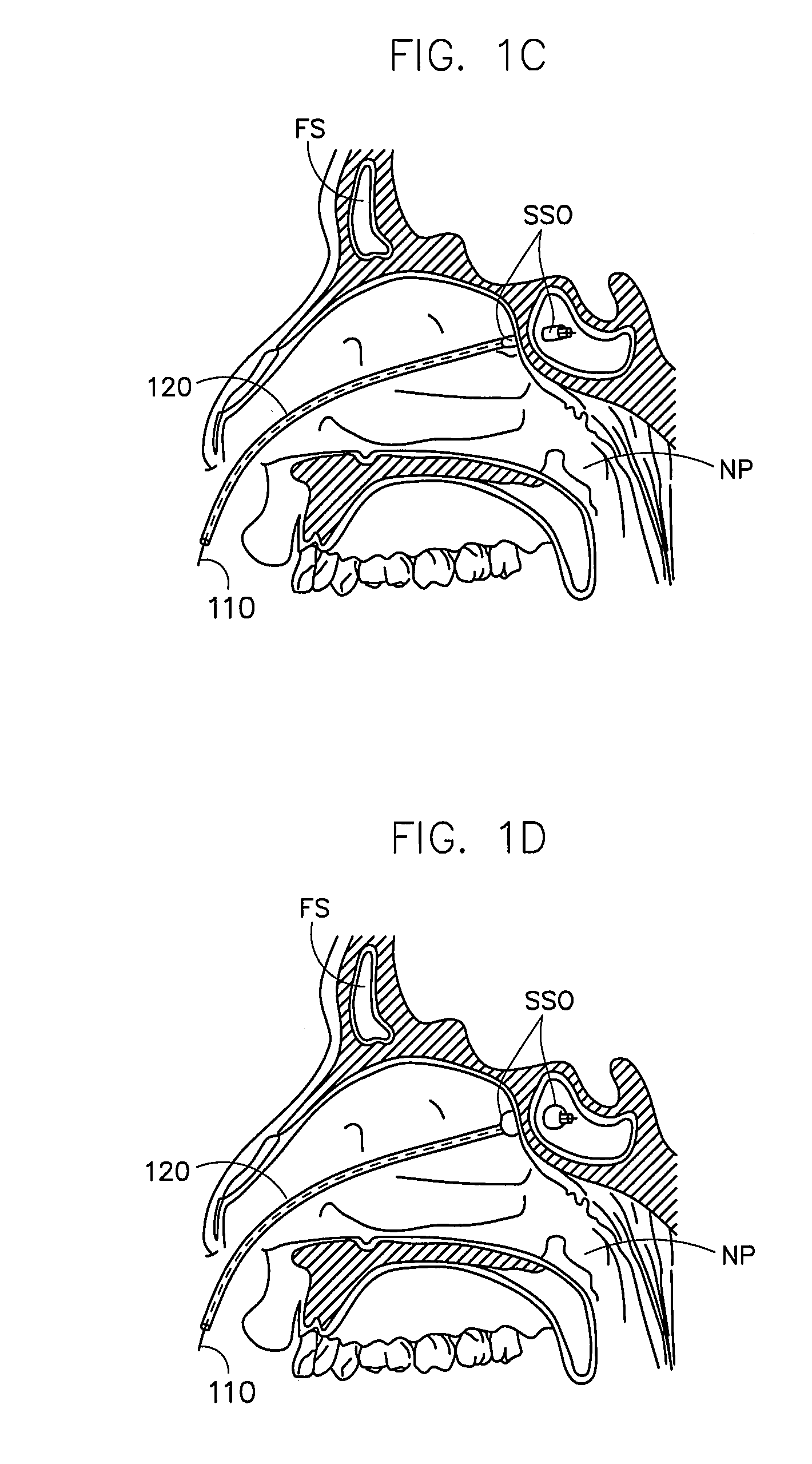Corewire design and construction for medical devices
a technology of medical devices and core wires, applied in the direction of guide wires, catheters, diagnostic recording/measuring, etc., can solve the problems of affecting the quality of life of patients,
- Summary
- Abstract
- Description
- Claims
- Application Information
AI Technical Summary
Problems solved by technology
Method used
Image
Examples
example
[0060]In one example, the stiffness of a guidewire designed and constructed according to an embodiment of the present invention was compared to a standard sinuplasty guidewire and a “floppy” sinusplasty guidewire.
[0061]An 80 cm guidewire with the following dimensions was tested in a standard guidewire flexibility test (STM02236):
[0062]Core Wire (Nickel Titanium)[0063]1st proximal region—length 55.8 cm; diameter 0.019 inches[0064]1st taper region—length 3.5 cm[0065]2nd proximal region (mid region)—length 14.5 cm; diameter 0.016 inches[0066]2nd taper region—length 3.2 cm[0067]3rd proximal region—length 1.5 cm; diameter 0.0065 inches[0068]transition region—length 1.1 cm; thickness 0.0035 inches; width 0.01 inches[0069]distal region—length 0.2 cm; diameter 0.007 outer coil (stainless steel)[0070]formed of 0.007 inch wire to 0.033 inch coil; length 80 cm radiopaque coil (92% platinum / 8% tungsten)[0071]0.016 inch diameter coil; length 0.5 cm proximal and distal tips[0072]smooth solder cap...
PUM
| Property | Measurement | Unit |
|---|---|---|
| length | aaaaa | aaaaa |
| length | aaaaa | aaaaa |
| length | aaaaa | aaaaa |
Abstract
Description
Claims
Application Information
 Login to View More
Login to View More - R&D
- Intellectual Property
- Life Sciences
- Materials
- Tech Scout
- Unparalleled Data Quality
- Higher Quality Content
- 60% Fewer Hallucinations
Browse by: Latest US Patents, China's latest patents, Technical Efficacy Thesaurus, Application Domain, Technology Topic, Popular Technical Reports.
© 2025 PatSnap. All rights reserved.Legal|Privacy policy|Modern Slavery Act Transparency Statement|Sitemap|About US| Contact US: help@patsnap.com



